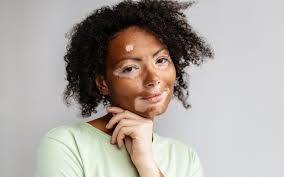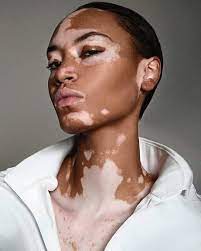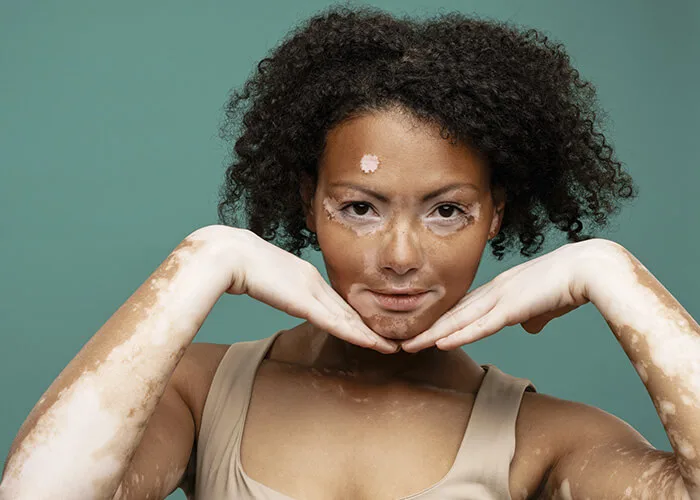One of the most common skin conditions in the world today is vitiligo, affecting an estimated 1% of the global population—around 80 million people. In Kenya, vitiligo is also a significant concern, impacting a large portion of the population. Scientists and medical researchers worldwide have been working to identify its causes and the best treatment options. Among the advancements in managing vitiligo, laser vitiligo treatment in Nairobi has emerged as an effective solution, helping many individuals restore skin pigmentation. While significant progress has been made, ongoing research continues to improve treatment options. As a pioneer clinic for dermatology treatment in Kenya, Avane clinic, Nairobi is at the forefront, availing vitiligo treatment to Kenyans and the world at large.
What is vitiligo?
Vitiligo is a skin condition, that makes the skin lose its normal colour. It is associated with the loss of skin pigmentation and causes some areas of the skin to appear lighter than the natural skin tone. This condition causes the formation of a small section of depigmented skin all over the body. These depigmented sections are called macules if they are less than 1 centimetre wide. If the macules are larger than 1 centimetre in diameter, they are then referred to as patches. The macules or patches can form on any part of the body. They can be irregular in shape and intensity. Moreover, the degree of lightness of the skin can vary from one part to another. They also vary from one person to another. Hairs that grow on the depigmented part also appear pale and whitish.

What causes vitiligo?
The exact cause of vitiligo is not yet known. Medical researchers have been pondering on this issue for a long time, but haven’t found a conclusive cause. However, it is believed that vitiligo is an autoimmune condition. This means that it is associated with defects in the immune system in the body. It is believed that vitiligo occurs when the body’s immune system attacks the melanocyte cells in the body. Melanocytes are skin cells tasked with the production of melanin. Melanin is the chemical substance that gives the skin its natural colour. Attack on the melanocytes cells affects melanin production. Consequently, this also affects the concentration of melanin, in these parts. Moreover, it creates sections of the skin with lighter pigmentation than the rest of the skin.
Vitiligo can also be caused by other factors such as genetics where it can be passed from one generation to another among close family members. It can also be caused by neurogenetic factors. Here, the nerves ending produce chemical substances that are harmful to the melanocyte cells. These substances affect the melanocytes and may even destroy them. Consequently, this also leads to lower melanin in certain parts and vitiligo patches appear. Moreover, it can arise as a result of trigger factors such as stress or environmental factors.
Who is at risk of getting vitiligo?
Vitiligo can potentially affect anyone, regardless of race, gender or age. It also affects people of all skin tones. It is, however, more conspicuous in people with dark skin tones than their white counterparts. This is because of the huge variation in colour between the normal dark complexion, and the white section of the skin caused by vitiligo. Additionally, although vitiligo can affect anyone at any age, it is more rampant in people under the age of 30. Vitiligo is an autoimmune condition. Hence, people with other autoimmune conditions are at a higher risk of getting vitiligo. These autoimmune conditions include Anaemia, Lupus, Thyroid disease, Psoriasis, Rheumatoid Arthritis and Addison’s disease.
The start and progression of vitiligo.
Vitiligo starts as small white patches on the skin. These patches can appear on the hands, forearms, face and feet and gradually spreads over other parts of the body. Sometimes, it spreads to the body’s mucous membranes such as on the mouth, nose, rectal column and genital areas. It may also affect the eyes and inner ears. As the disease progresses, patches may widen and spread over other parts, but they usually stay on the same part for years. On the other hand, macules shift their positions over time, as some areas lose their pigmentation while others regain the pigmentation. The amount of skin affected by the condition varies from time to time, and from one patient to another.
Types of vitiligo.
- Generalized: This is the most common type of vitiligo. It causes macules to appear in various places on your body.
- Segmental: This only affects one side of your body or one area. It is common on the hands or face.
- Mucosal: Mucosal vitiligo affects mucous membranes of your mouth and/or genitals.
- Focal: Focal vitiligo is a rare type of vitiligo. Here, the macules develop in a small area and don’t spread in a certain pattern within one to two years.
- Trichome: It causes a bullseye with a white or colourless centre, then an area of lighter pigmentation, and an area of your natural skin tone.
- Universal: This type of vitiligo causes depigmentation on more than 80% of the skin. However, it is very rare.
Diagnosis.
Diagnosis of this condition happens at a mandatory consultation with our dermatologist. The specialist will conduct a simple visual examination of the skin. This visual examination usually leads to an accurate diagnosis of vitiligo. However, the doctor may use a Wood’s lamp to look at your skin. This lamp uses an ultraviolet (UV) light that shines onto your skin. It helps the doctor differentiate vitiligo from other skin conditions. In addition, the dermatologist will ask you questions about your medical history and family medical history. This is aimed at understanding the possible cause of your condition.

Treatment
There are many treatments available for vitiligo. These include local medication, depigmentation therapy, light therapy(phototherapy) and surgery. At Avané clinic, we use light therapy treatment. This involves the use of laser energy to combat vitiligo. There are various types of phototherapies, such as Narrowband Ultraviolent B laser (NB-UVB), excimer laser and Psoralen Ultraviolent A laser (PUVA). At Avané clinic, we use Narrowband UVB laser therapy. It is a cutting-edge technology, with more effective results and better treatment for vitiligo than other types.
The Narrowband UVB (NB-UVB) therapy.
Narrowband UVB laser technology is the most effective treatment method for vitiligo, At Avané clinic, we give you easy access to it. This procedure involves NB-UVB lamps, that have a sharp laser emission of about 311-313 nm laser. This makes it easier to administer and use than PUVA, yet more effective and safer. During the procedure, the patient is placed in special cabins with fluorescent lamps that emit UV light at a certain wavelength. Excimer lasers or lamps are used to treat individual parts of the body such as the hands and feet. The treatment takes about 10 minutes to complete.
Our doctors stay in touch with the studies being conducted and guidelines issued about vitiligo treatments and adhere to them. This helps ensure the safety of the patients and the efficiency of the procedures. Studies suggest that having laser therapy done 3 times a week, for 6 months increases skin pigmentation by about 65%. Hence, Dr Pancholi will recommend repeat sessions of about 2 to 3 sessions for 6 weeks. He will work with you to find the best schedule and time for the treatments. The level of progress and re-pigmentation can be noticed as the treatment continues.
NB-UVB treatment protocol.
Undirected and careless exposure to these lasers can have dire effects on the patient. This is why one needs to observe certain guidelines or protocols during the treatment. These protocols not only protect the patient but also help increase the efficiency of the treatment. They ensure that the procedure is fast enough to prevent slow progression which wastes time for the patient, who is eager to find the dose that will induce re-pigmentation. Moreover, slow progression encourages light adaptation in the skin. This blocks UV penetration and the beneficial effects, possibly prolonging the time it takes to reach a therapeutic dose.
These protocols dictate the frequency, dosing and shielding needed. The frequency of the treatment is decided upon by the doctor, with consultations with the patient. It should however be between 2 to 3 times a week. The dosing for patients starting vitiligo treatment is set to about 400 MED. The doctor can adjust this depending on the severity of the condition. During the procedure, sensitive parts of the body need to be shielded from the laser. These include the eyes and the male genitalia. Since female genitals are typically not exposed during treatment, shielding is not required. The patient is given glasses or goggles to protect their eyes from the UVB lasers.
Side effects of NB-UVB in vitiligo treatment.
Narrowband UVB laser treatment is highly effective in vitiligo treatment. Despite this, it has some minor side effects. However, it is important to note that these effects are rare. They include redness, dry skin, itching and skin rashes. Other side effects are burning blistering and premature skin ageing. Overexposure to UV rays for long periods may increase one’s chances of getting cancer, though it is very rare in vitiligo patients. At Avane clinic, our specialists work overboard to ensure that no harm befalls our clients. We practice safe procedures and observe a high level of proficiency which ensures reduce chances of occurrence of side effects.
Benefits.
NB-UVB offers an improvement in your skin tone within no time. Laser treatment involves less complexity as compared to surgical procedures. Moreover, it involves fewer and minor side effects. It is also cheaper, and safer and promises better results. At Avané clinic, you will be in the hands of highly qualified and experienced personnel. We also ensure that we have the latest technology available and make necessary improvements to our equipment. Moreover, we follow the safety guidelines and precautions, which helps guarantee our client’s safety. To experience the best solution to vitiligo at a friendly cost, look no further than Avané clinic. We are located at The Yaya Centre in Nairobi. Visit us today or contact us to book an appointment with our specialists.

